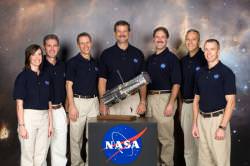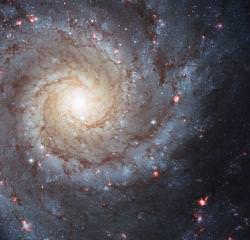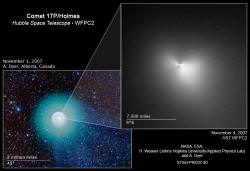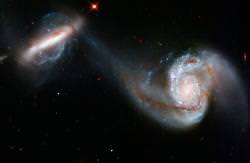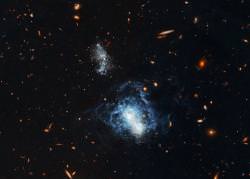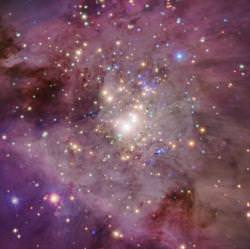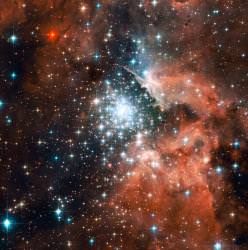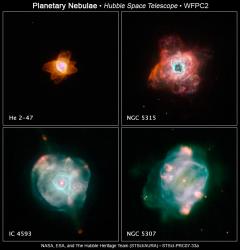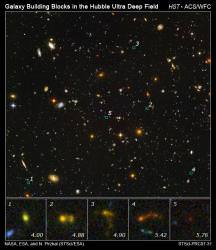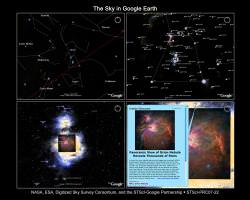Although the space shuttles have a busy schedule completing the construction of the International Space Station, there’s one other job to complete – servicing the Hubble Space Telescope. NASA officials announced the details of the mission today at the Winter meeting of the American Astronomical Society. If all goes well, the space shuttle Atlantis will visit Hubble some time around August 2008, carrying 7 astronauts and the spare parts they need to bring Hubble back to top-notch condition.
Over the course of 11 days, the astronauts will perform a total of 5 spacewalks. During these trips to service Hubble, the astronauts will install two new science instruments, upgrade existing instruments and replace failing gyroscopes, batteries and thermal blankets. Atlantis will also reboost the telescope’s decaying orbit.
One of the most critical jobs will be to repair the telescope’s Advanced Camera for Surveys (ACS). This is the visible light instrument that produces the pretty pictures that have made Hubble so famous. The instrument suffered a power failure in January 2007.
With this collection of upgrades, Hubble’s life should be extended to 2013. David Leckrone, Senior Hubble Project Scientist noted that “when the astronauts leave Hubble for the last time, it will be at the apex of its capabilities – better than it has ever been before.” In fact, with these upgrades, Hubble should be 90X more sensitive than before.
One of the unique challenges of this mission will be for the astronauts to repair components that were never designed for orbital repair. In some cases, the astronauts will need to open up boxes and replace circuit boards.
Lead astronaut John Grunsfeld explained just how complex the task of repairing the Advanced Camera for Surveys is going to be, “we’re going to do something that’s never been done before. We’re going to swap circuit boards. We’re going to be working with hundreds of number 4 torque screws. These are really tiny screws. Whatever you do, don’t lose a screw inside the telescope. I have to cut an electromagnetic blanket on the Advanced Cameras for Surveys which could leave sharp edges. We’re astronauts, wearing balloons of air around us, and we don’t like sharp edges. With that removed, I then have to remove 36 of these screws. But they’re at an angle, so I won’t be able to see or reach them easily. I’ve been training in an underwater tank, and plan to get to know each of these screws.”
To demonstrate the tools he’s going to be working with, John Grunsfeld wore his astronaut gloves during his presentation in today’s press conference. “I figured I needed as much practice with these gloves as possible.”
Even the death of Hubble is being arranged. At some point in 2020, when the telescope finally reaches the end of its enhanced lifetime, NASA intends to dock a rocket to the telescope and then drive it into the ocean. As part of this process, the astronauts will install a special docking module, so the deorbiting rocket can attach easily and complete its grim task.

